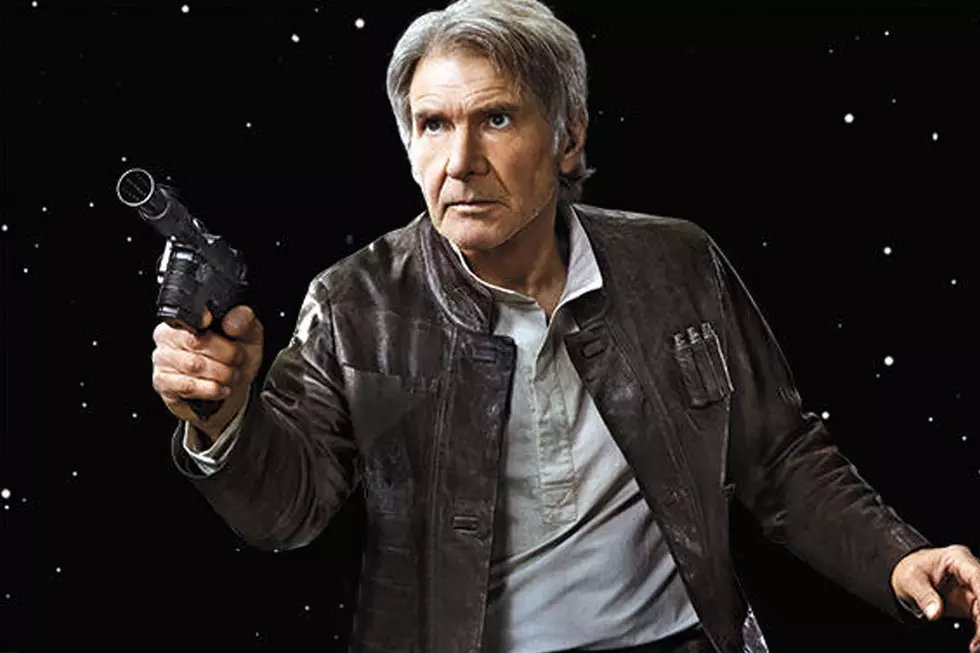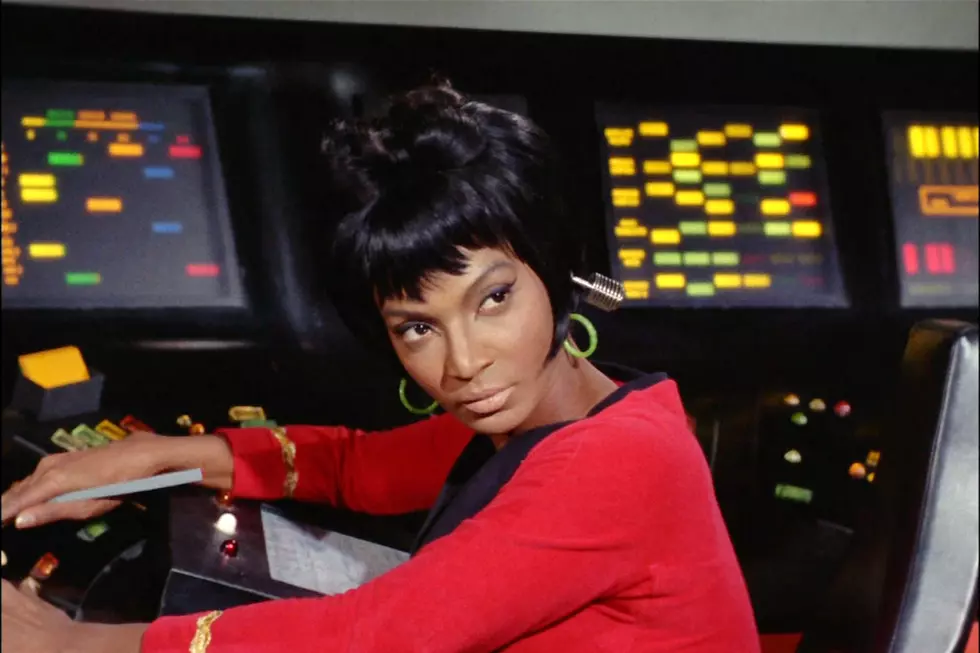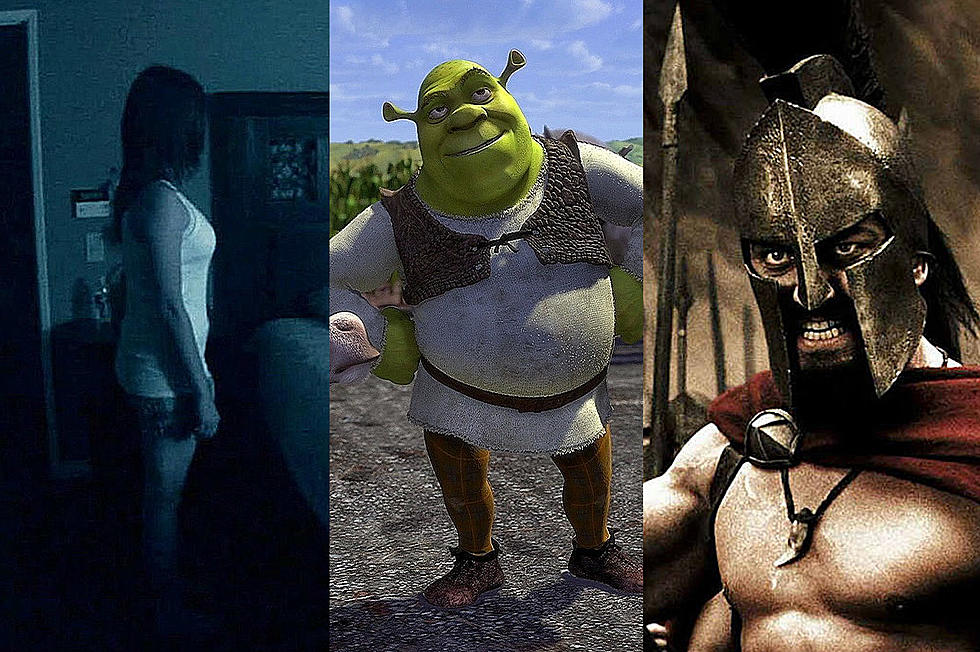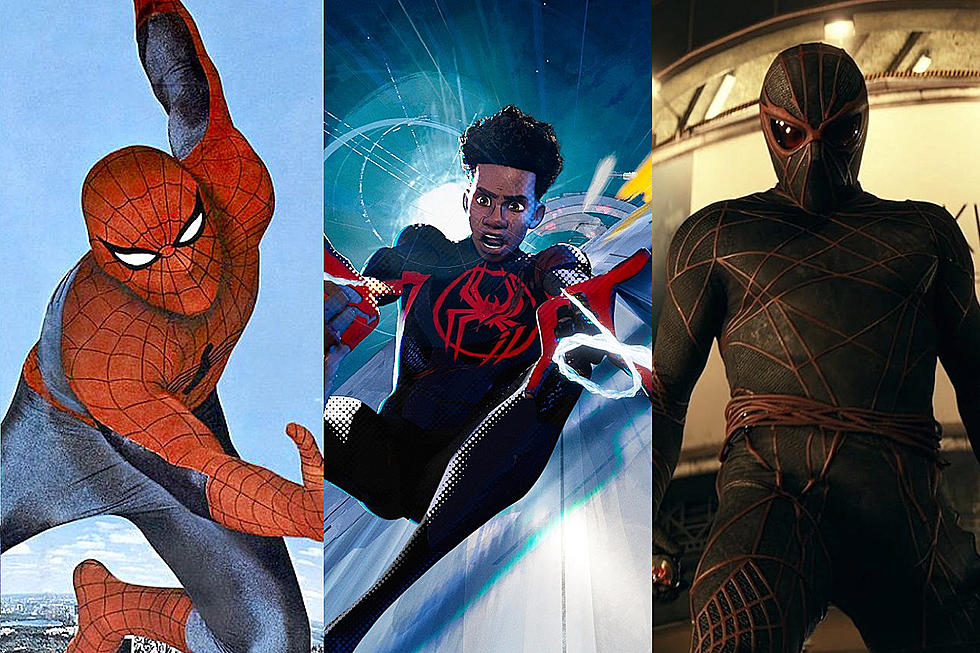
Welcome to the Age of the Legacyquel
It’s rare for a movie trailer to give me chills. But the trailer for Star Wars: The Force Awakens did.
The key moment was the conversation between Rey (Daisy Ridley) and Han Solo (Harrison Ford). “There were stories about what happened,” she says. “It’s true. All of it,” Han replies. “The Dark Side. The Jedi. They’re real.”
It’s too early to say exactly what this sequence means for the wider Star Wars mythology, but even out of context, the subtext of this exchange is crystal clear. Han represents the first wave of Star Wars fans, who grew up basking in the glory of the original trilogy. Rey and Finn (John Boyega) represent the young Star Wars fans of 2015, whose relationship with the universe of Star Wars has been defined by the prequels and a lot of subpar ancillary materials. When Han says the Jedi and the Dark Side are all real, he’s talking as much about the ephemeral, life-changing magic of the early Star Wars movies, as he is about the adventures of Luke and Darth Vader.
I don’t know how large Han, Leia, and Luke Skywalker’s roles in The Force Awakens are, or whether any or all of them will survive to appear in Star Wars Episodes VIII and IX. But there’s no doubt that their days in these roles are numbered. Whatever their narrative purpose, their appearances in the new Star Wars carry an additional a symbolic dimension: Handing this beloved series down from its first generation of heroes to its next one.
That’s something that’s happening a lot these days. Though there are still occasional reboots or prequels, this very specific kind of sequel — in which beloved aging stars reprise classic roles and pass the torch to younger successors — is becoming increasingly common in the American film industry. These movies are all about revitalizing old franchises through the notion of legacy, leading to this current wave of what we could call “legacyquels.”
Interestingly, The Force Awakens is not Harrison Ford’s first legacyquel. Almost 20 years after his last Indiana Jones adventure, a 65-year-old Ford dusted off his fedora and whip for 2008’s Indiana Jones and the Kingdom of the Crystal Skull. In the film, he’s called back to action by a young man named “Mutt” Williams (Shia LaBeouf), who, as it turns out (SPOILER ALERT FOR A MOVIE THAT YOU DO NOT NEED TO SEE UNLESS YOU REALLY LOVE WATCHING SHIA LABEOUF SWING ON VINES LIKE TARZAN), is actually Indy’s son with his old flame Marion Ravenwood (Karen Allen). Indy and Mutt’s journey to rescue Marion becomes an informal way of grooming Mutt to become a new hero in his father’s mold. In the film’s final scene, Indy and Karen are married and Mutt grabs his father’s iconic hat, only to have it snatched from his hands a moment before he’s about to try it on.
That tentative handoff was quite prophetic; seven years later, we’re still waiting for our first Mutt Williams solo film.
A much more confident exchange took place the following year, in 2009’s Star Trek, when the late Leonard Nimoy appeared in a fairly significant supporting role as “Spock Prime” who time travels to the past and inadvertently creates an alternate timeline that leads to a new origin story for the crew of the USS Enterprise. At the end of the film he shares a scene with the new Spock (Zachary Quinto) and gives him his blessing in classic Vulcan fashion:
J.J. Abrams brought Nimoy’s Spock back for another appearance in Star Trek Into Darkness; this legacyquel approach is yet another thing that make his Star Trek movies feel like dry runs for making Star Wars. In between Abrams’ Star Trek and Star Wars, numerous other long-running film series adopted this model.
In 2010, Disney brought Tron back to the big-screen in Tron: Legacy, and convinced Jeff Bridges to reprise his role as computer programmer Kevin Flynn, the absentee father of the franchise’s new hero, Sam, played by Garrett Hedlund.
Tron: Legacy might be the ultimate legacyquel, not only because the word legacy is right there in the movie’s title, but because in the movie’s climactic showdown with its big villain, Clu (a digital Jeff Bridges), Kevin almost literally passes the torch to Sam and Olivia Wilde’s Quora when he sacrifices his life and swaps his “identity disc” with Quora’s so she and his son can escape the world of Tron (and, presumably, return to it for more light cycle races in an eventual Tron 3).
2011 also saw Scream 4 (in which the horror franchise’s old guard — Neve Campbell, David Arquette, and Courtney Cox — shared the screen with a new batch of self-referential horror fans including Emma Roberts, Adam Brody, and Hayden Panettiere) and Mission: Impossible - Ghost Protocol, which introduced 40-year-old Jeremy Renner as a potential understudy for the 49-year-old Tom Cruise. Ghotocol was ultimately so successful that Cruise returned for last summer’s Mission: Impossible - Rogue Nation, but even if the producers never intended for Renner to become the new protagonist of the M:I universe, he certainly thought they did. In 2010 he told MTV that Mission: Impossible was “a franchise to potentially take over” and that while he couldn’t predict the future, “that’s certainly the idea.”
After 2011 there was a brief legacyquel lull, although 2013 did bring A Good Day to Die Hard (in which John McClane teams with his vaguely Garrett Hedlund-esque son, played by Jai Courtney), and an argument could be made that 2012’s Skyfall is a sort of subtle legacyquel for the way it introduced newer, younger versions of Bond’s support staff, Moneypenny, played by Naomie Harris, and Q, played by Ben Whishaw, along with a new M, Ralph Fiennes. But the trend really picked up steam in the last year, starting with X-Men: Days of Future Past. This seventh X-Men movie brought back the original cast — Patrick Stewart, Ian McKellen, Halle Berry — for one final time-traveling adventure with the younger cast from X-Men: First Class — James McAvoy, Michael Fassbender, Jennifer Lawrence — and a respectful curtain call.
When Star Wars: The Force Awakens opens in theaters next month it’ll be the fourth legacy of 2015. Last summer, Arnold Schwarzenegger became the T-800 for the fourth time in Terminator Genisys, which essentially reset the series’ jumbled chronology with a new timeline and a rejuvenated cast. A few weeks later, audiences got another Vacation, in which the Griswold clan’s son, Rusty (now played by Ed Helms), all grown up with a family of his own, decides to take his wife and kids to Wally World; Chevy Chase and Beverly D’Angelo were both on hand for a couple scenes as his parents, Clark and Ellen Griswold. And this Wednesday audiences will get to see what Rocky Balboa’s been up to since 2006’s Rocky Balboa when Sylvester Stallone co-stars in Creed. This time, the Italian Stallion trains a new underdog, Adonis Johnson Creed (Michael B. Jordan), to become a champion.
(There are even more examples on television. The old TV sitcom Boy Meets World has mutated into Girl Meets World; the old show’s teenagers, Cory and Topanga, are now its parents, with a teen of their own. Over on Starz, wisecracking zombie fighter Ash Williams is currently back on the job with several young protégés in Ash Vs. Evil Dead.)
“Time, y’know, takes everybody out. It’s undefeated,” Rocky tells Donnie, explaining how he beat his dad in Rocky II while inadvertently also explaining the existence of Creed and all these legacyquels. Actors retire, but their franchises don’t; at least not anymore. And so new heroes have to be invented to restaff them.
This is a matter of necessity in the new Hollywood. Disney and Lucasfilm have already said that once Star Wars starts up again next month, it will never stop again. But Star Wars is only the pinnacle of this new model, not the exception. With Hollywood’s ever-narrowing focus on pre-sold brands, you can kiss goodbye the days when the endpoints of franchises were defined by the enthusiasm of their creator (George Lucas officially threw in the towel after six films and a gabillion books, comics, and cartoons) or the availability of their stars (Harrison Ford may be done in the near future, but Disney’s already got a “Young Han Solo” in the works for a new actor to take his place). In that aforementioned piece on the future of Star Wars, Wired called it “the forever franchise.” In reality, all franchises are now forever franchises. Or Hollywood certainly wants them to be.
Hence the legacyquels, which are probably the most graceful way to segue from old to new. Straight-up reboots run the risk of alienating senior members of fanbases; running old casts into the ground without a succession plan can marginalize younger demographics. A good legacyquel gives old and young fans a movie they can claim as their own, a key element of ensuring that these massive tentpoles reach all four audience quadrants.
They’re also fabulous P.R., or at least they stave off the potential for bad P.R. that could arise if old cast members feel left out and start saying negative things in the press about the new “unfaithful” interpretation of an old property. At the same time, they prevent complaints from hardcore fans that the films they love are being forgotten or replaced; in good legacyquels everything that’s come before still matters and contributes to a larger narrative tapestry that’s still being woven. That also lends these properties an air of momentousness. These aren’t just commercial entities designed to bleed you dry; these are practically Homeric generational epics.
Most importantly, they subliminally suggest that even as older characters hand down these stories, older fans in the audience should do the exact same thing. Parents pass down old family stories and sports loyalties; now they can pass down Star Wars as well. It won’t be long before it’s something shared between grandparents and grandchildren. For a movie studio, that’s the ultimate kind of family heirloom: One they own, and can sell to you over and over. “It’s true. All of it. The Dark Side. The Jedi. They’re real,” they’ll say, before adding, “And you can bring the truth home again on an all new Blu-ray for just $19.95.”
More From Banana 101.5










